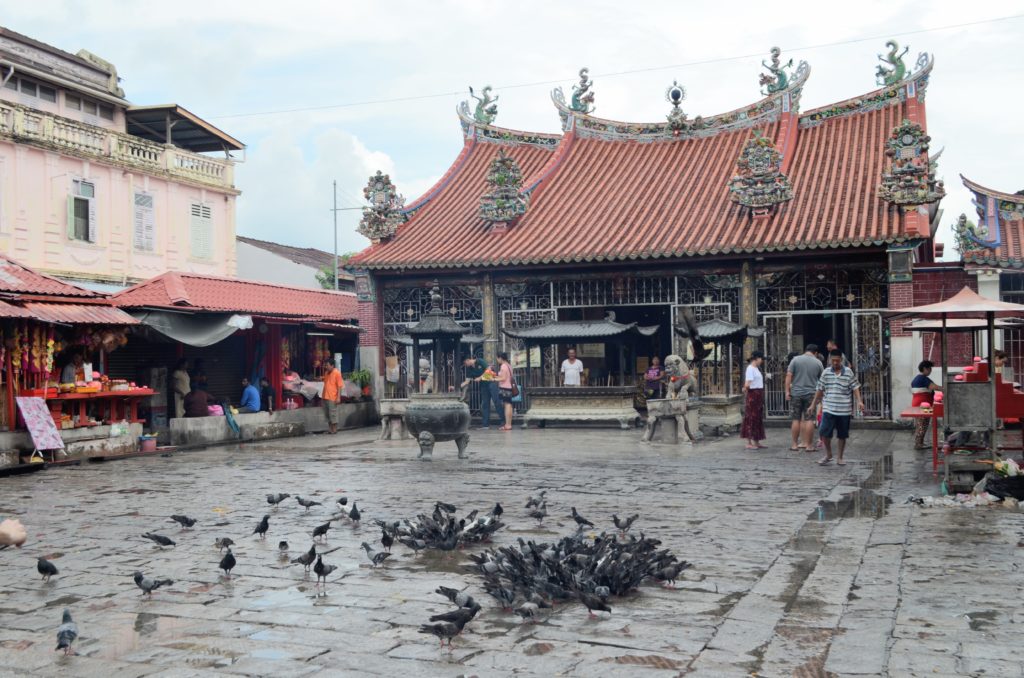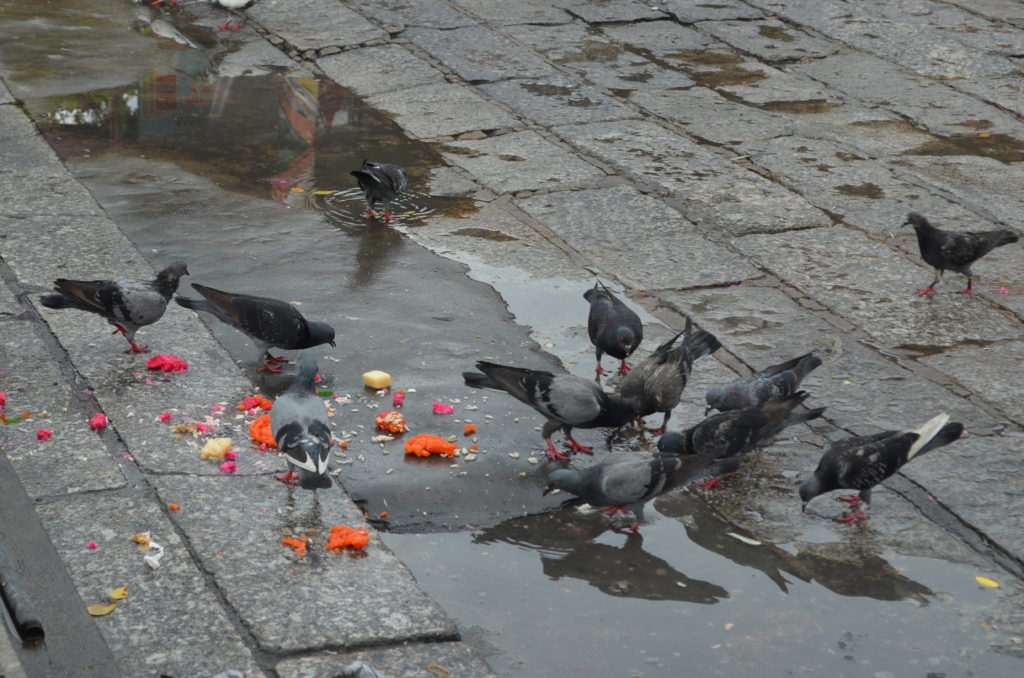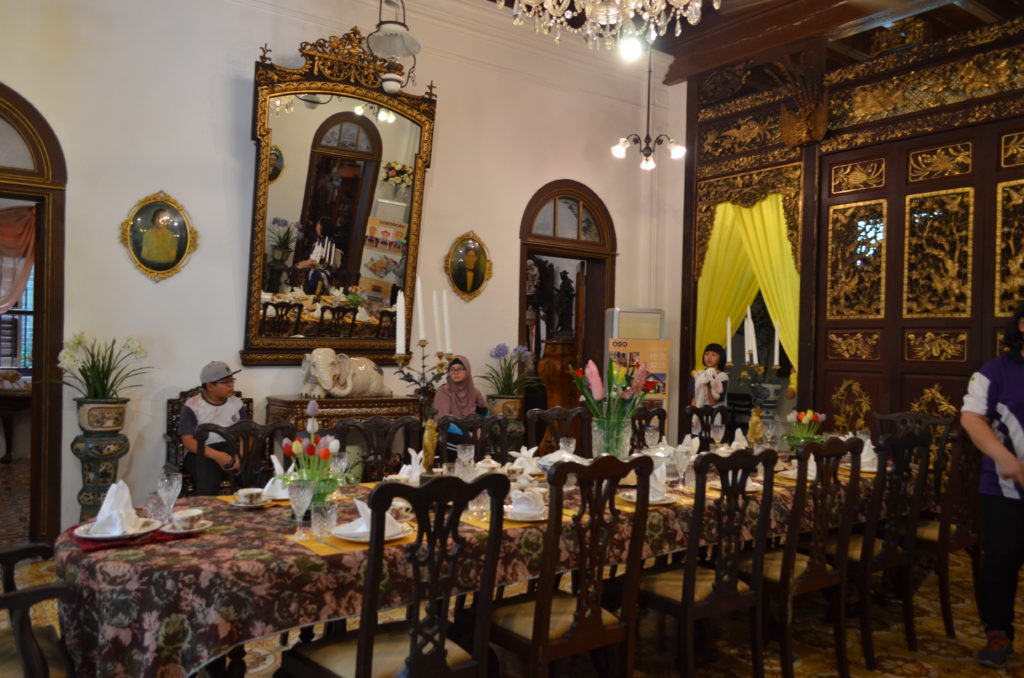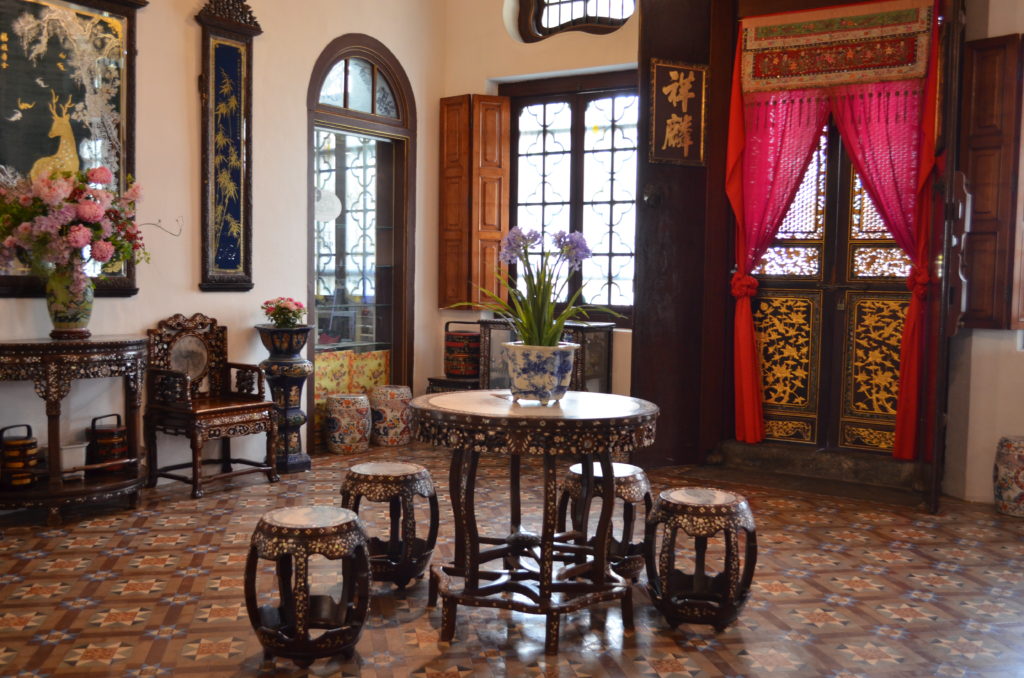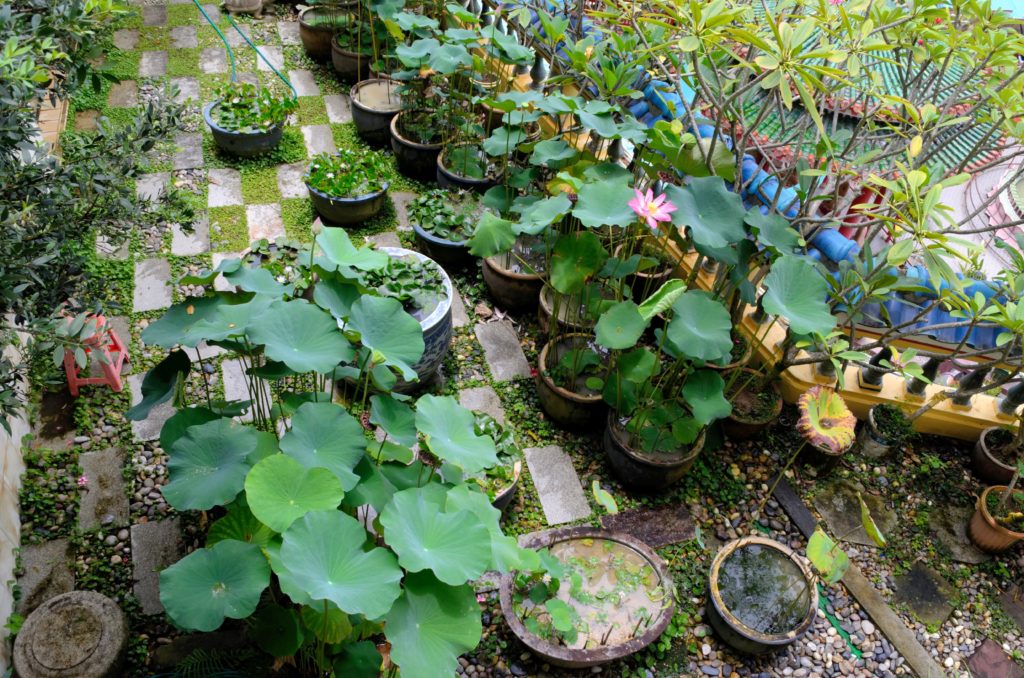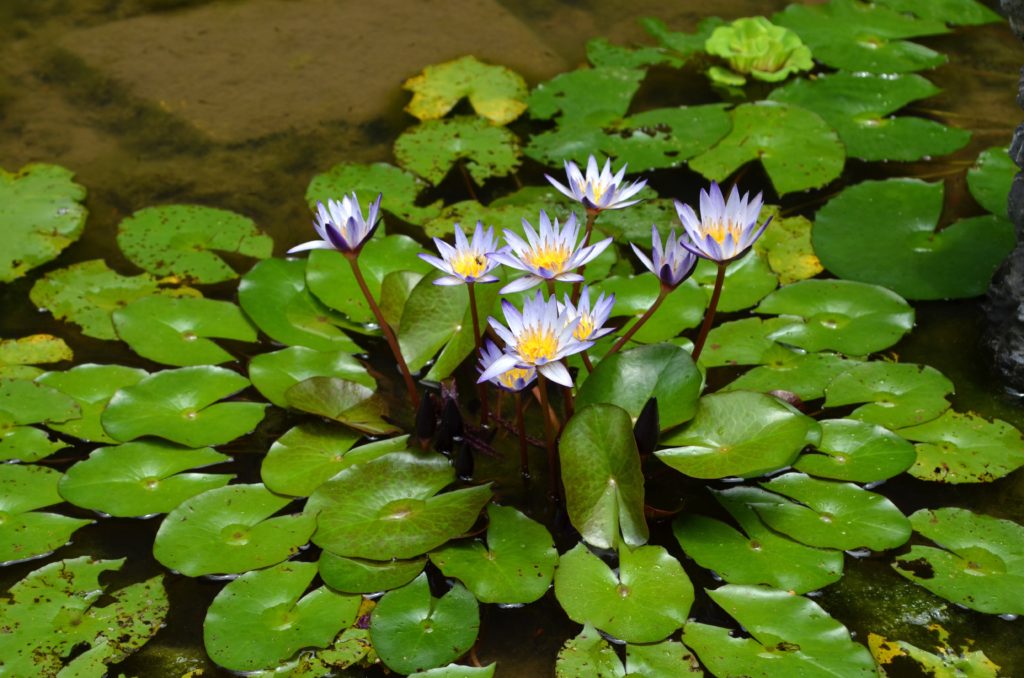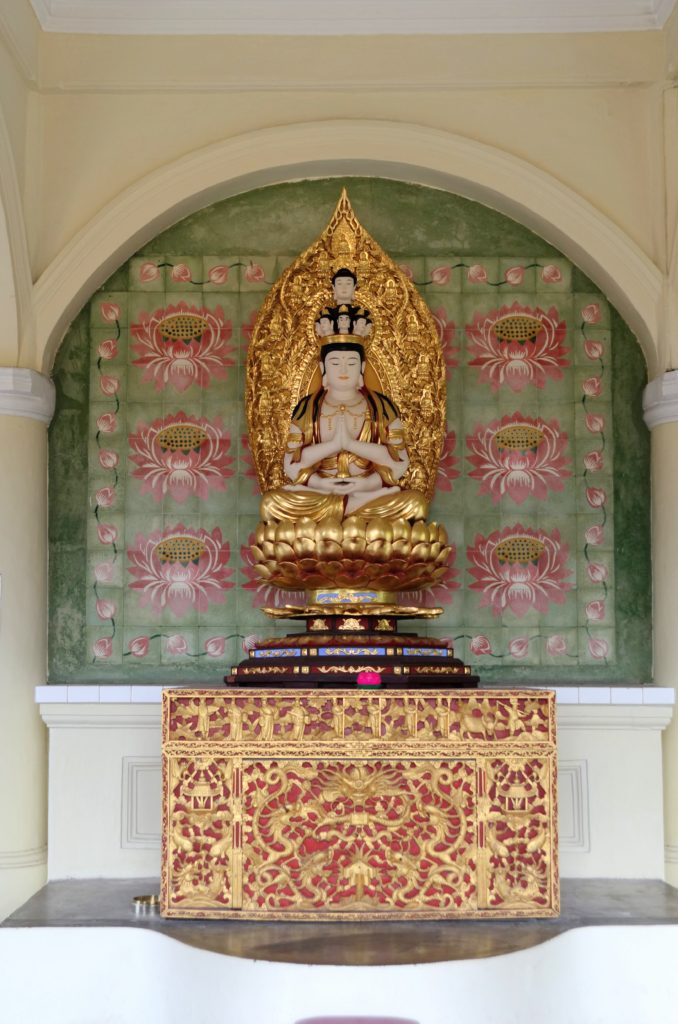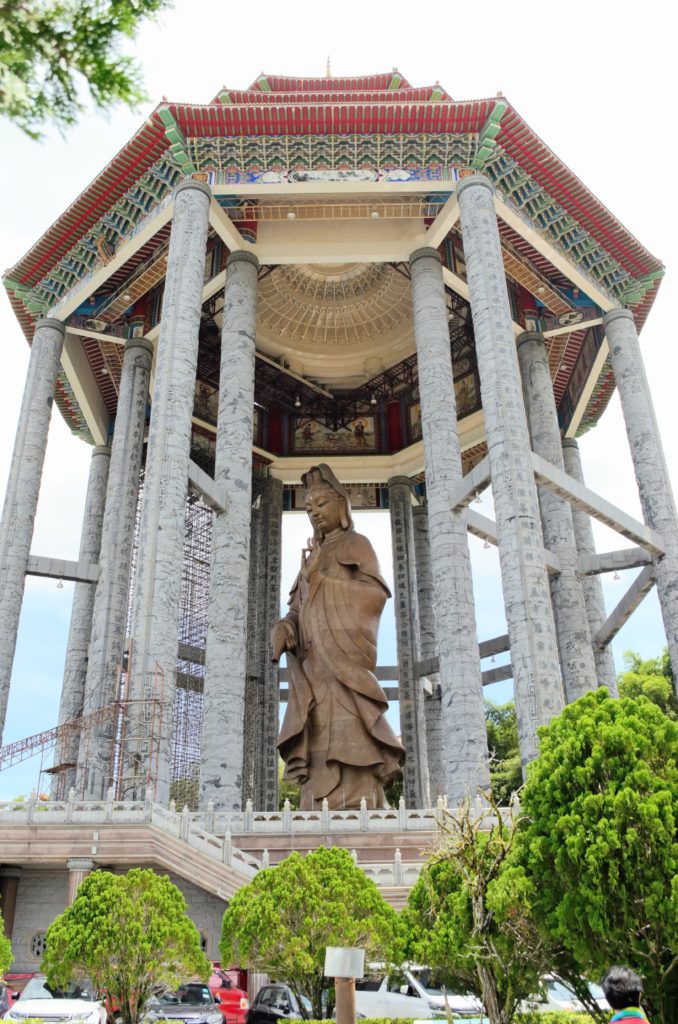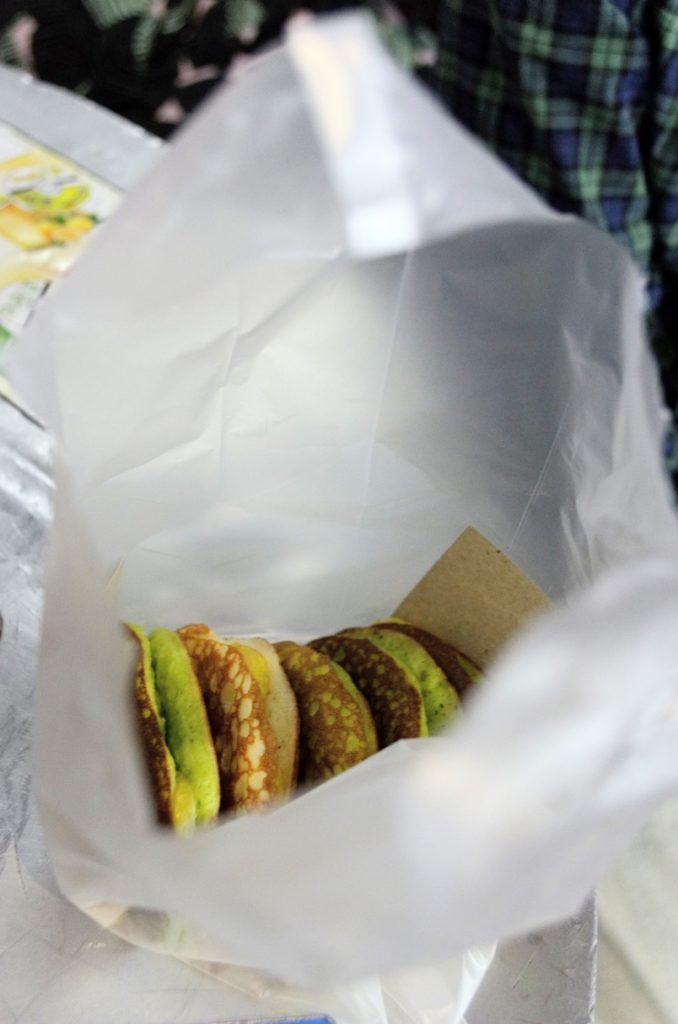Weekend in Georgetown, Penang, Malaysia
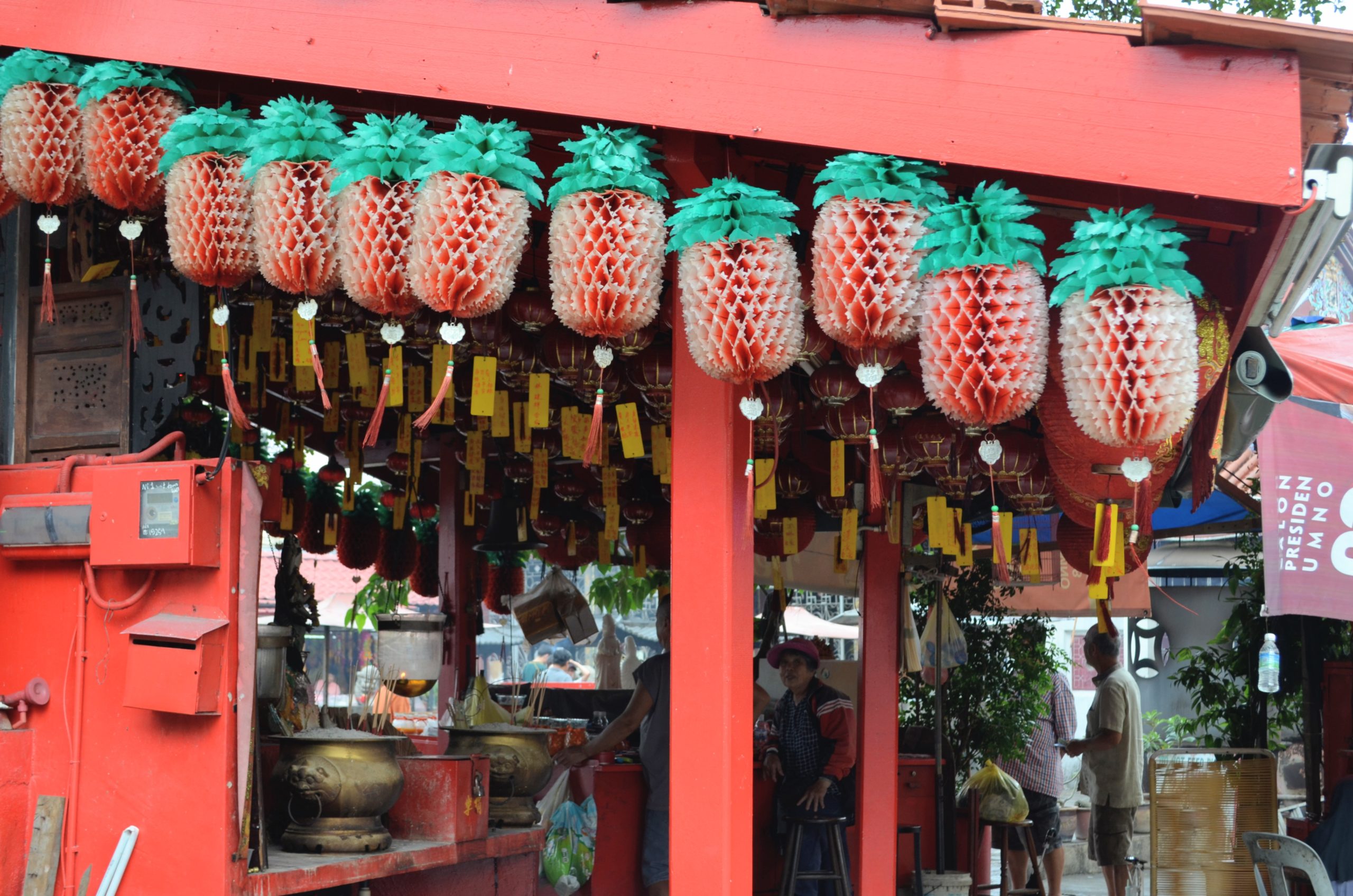
Georgetown, Penang
Penang is a great weekend getaway option from Singapore. Not only is it nearby but it is also budget-friendly. Flights are $50-70 flying out of Changi Airport and are a little over an hour long. Top reasons for visiting Georgetown, Penang include the fact that its historic center is a UNESCO Heritage Site and the street food is extraordinary! There is also a lot of history in this city, which claims common roots and cultural influences with Singapore. If you want to get a deeper look into Peranakan culture this is the place to be!
Thanks to flourishing trade in the 15th century and an intermixing of Chinese and Malay/Indonesian communities, a sub-ethnic group of people and cultural traditions developed. These people identified themselves “Peranakan.” Georgetown is the perfect place to take a glimpse into this community’s heritage, which still thrives today. Some of the best museums, essentially restored homes of the most prominent families, can be viewed here.
Here are some places you can’t miss when in Penang:

Street of Harmony
As a result of the cultural diversity in Penang (predominantly Chinese, Malay, Indian) there is also a legacy of religious harmony. One of the main roads in Georgetown is actually called the “Street of Harmony,” where you will find a church, mosque, Hindu temple and Chinese temple. These places of worship continue to be used today and when we walked around on a Saturday these were brimming with life.
Just off the Street of Harmony are some old mansions that are quite exquisite – one of which is the Khoo Clan House. At the center of this cluster of buildings is an elaborate family shrine with paper lanterns, gold paint, and calligraphy. This building is the grandest of its kind in Malaysia and belonged to wealthy Straits Chinese traders in Malacca. The entire complex is an enclosed space that emulates a village that is self-governed and independent in that it has its own financial, educational, and welfare organizations. Although the Khoo Clan House is no longer at the center of important functions it is beautifully restored and a highlight of historic Penang.
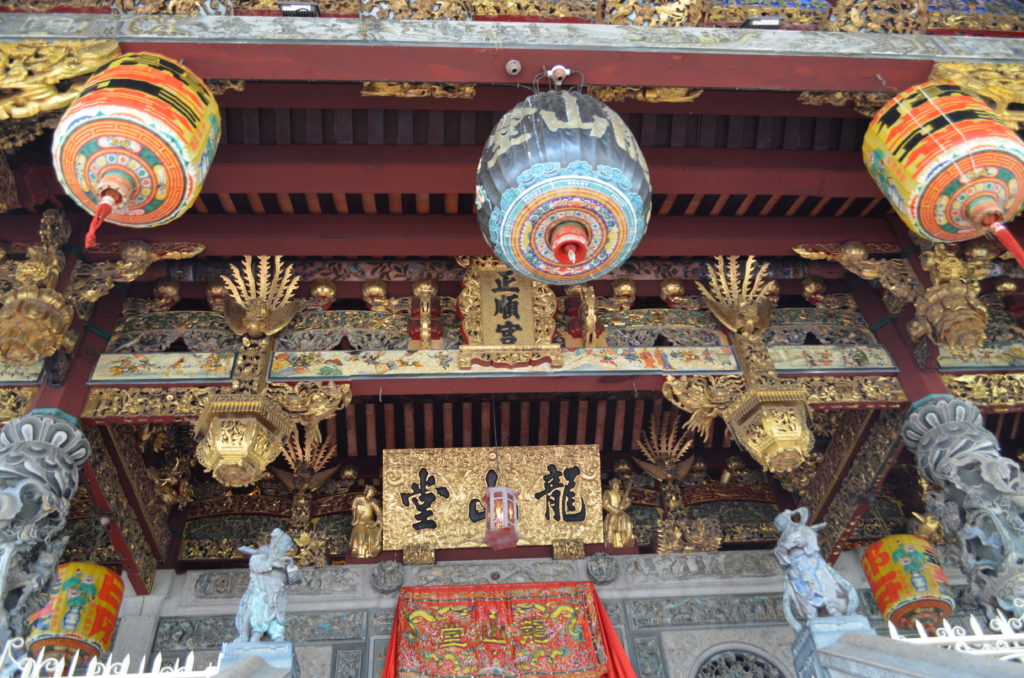
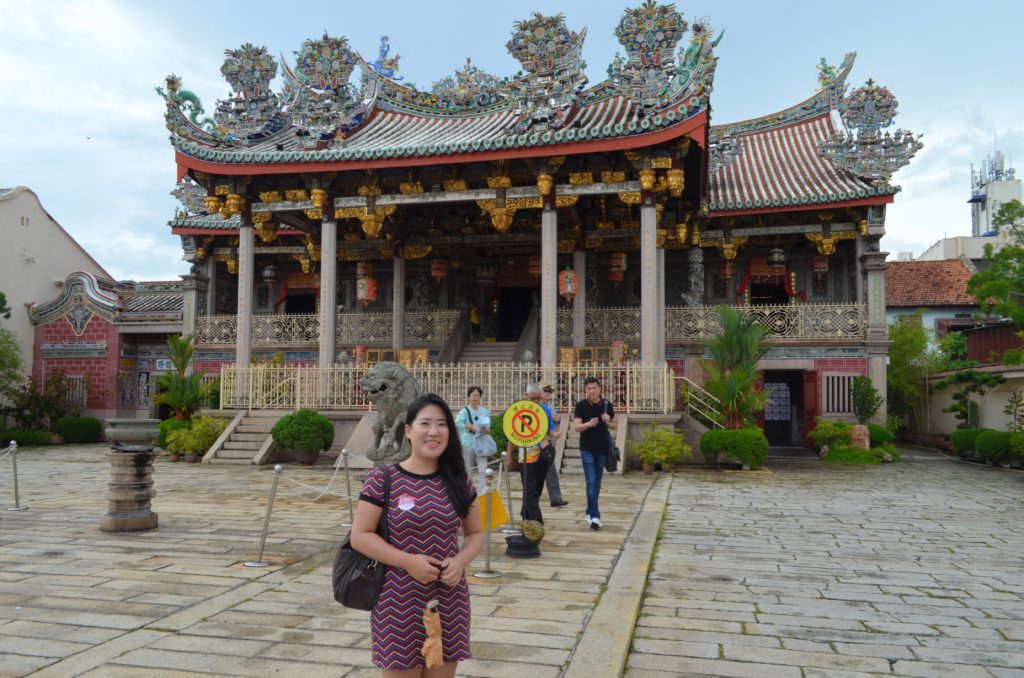
Pinang Peranakan Mansion
When you are in Georgetown you must absolutely visit the Peranakan mansions. One of the best to see is the Pinang Peranakan Mansion, which doubles as an excellent museum. You can learn all about how wealthy families used to live at the height of their influence. Peranakan women are referred to as “nonya” and men as “baba.” Peranakan culture is all about hybridity and an intermixing of culture – Chinese, Indian and Malay with a bit of Dutch, Portuguese, and Indonesian influences.
Clothing and dress were significant forms of cultural expression for Peranakans. The mansion has impressive collections of colorful, embroidered kebayas, a traditional blouse, footwear, and jewelry. Peranakan food is also unique as it is a true blend of Chinese and Malay cuisines. From experience, the food is spicy, flavorful, and rich with aromatic flavor. Check out my experience of Peranakan high tea at Violet Oon in Singapore. You absolutely need to try it! What is also striking about the Pinang Mansion is the furniture and decor. You can see a mix between Eastern and Western motifs. In fact, Peranakans were known to be quite modern in their views towards technology and Western influences.
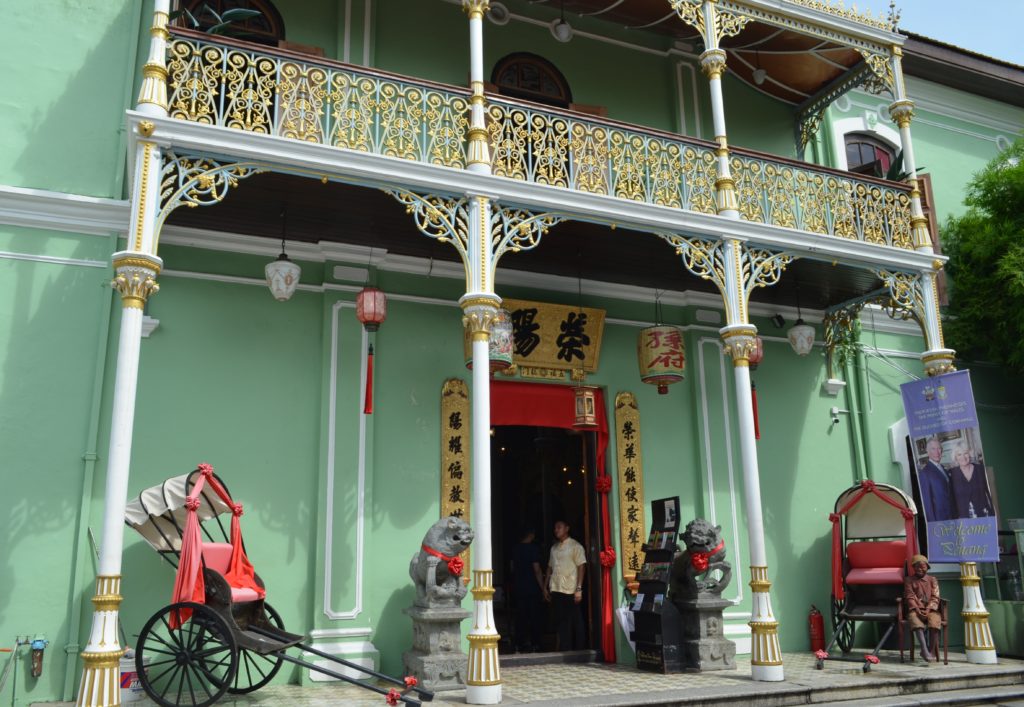
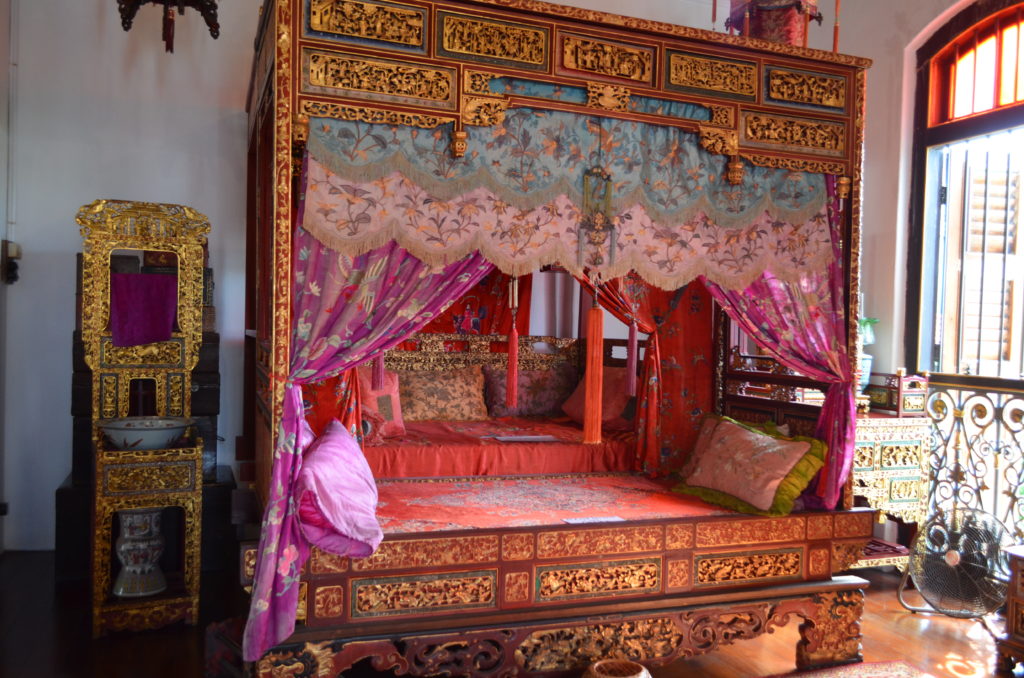
Kek Lok Si Temple
A short car ride away from the historic center of Penang is a beautiful Buddhist temple. I absolutely recommend spending an afternoon here to admire the views and this sprawling complex. Kek Lok Si Temple was built between 1890 and 1905 and has quite a lot to see. The temple remains a place of worship so be sure to be respectful as you roam about and take pictures. It is actually an important point of pilgrimage for Buddhists in Southeast Asia and is the biggest in Malaysia.
As you walk up the temple complex you are offered stunning views of Penang and can view some lovely interior gardens full of flowers, fish, and butterflies. Notice the different varieties of lotus blossoms! These flowers are particularly revered in Buddhism because of their symbolism for purity. Even in muddied waters lotus plants can purify everything around them.
At the very top of the temple you will come across an impressive sculpture of the Goddess of Mercy. Not only is it very tall but it stands underneath a rather modern-looking structure with a beautifully painted ceiling. You will also find the Pagoda of Rama VI (Pagoda of Ten Thousand Buddhas), which is delightful to climb. Each level has different statues and tiles of the buddha in varying designs and colors. The view of the entire complex from above is also stunning (first picture below).
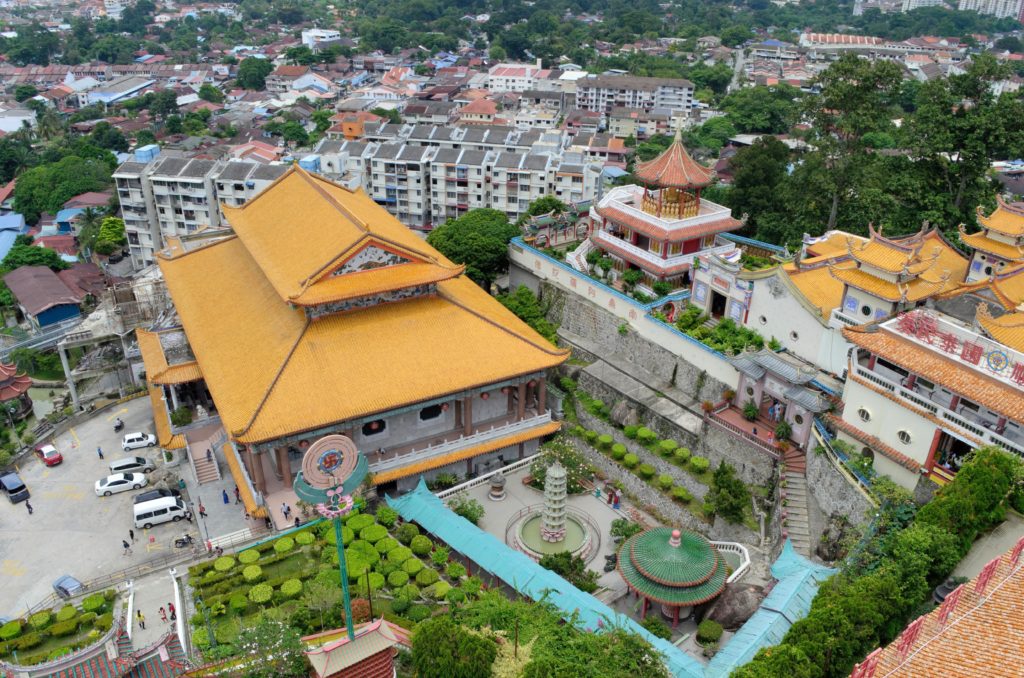
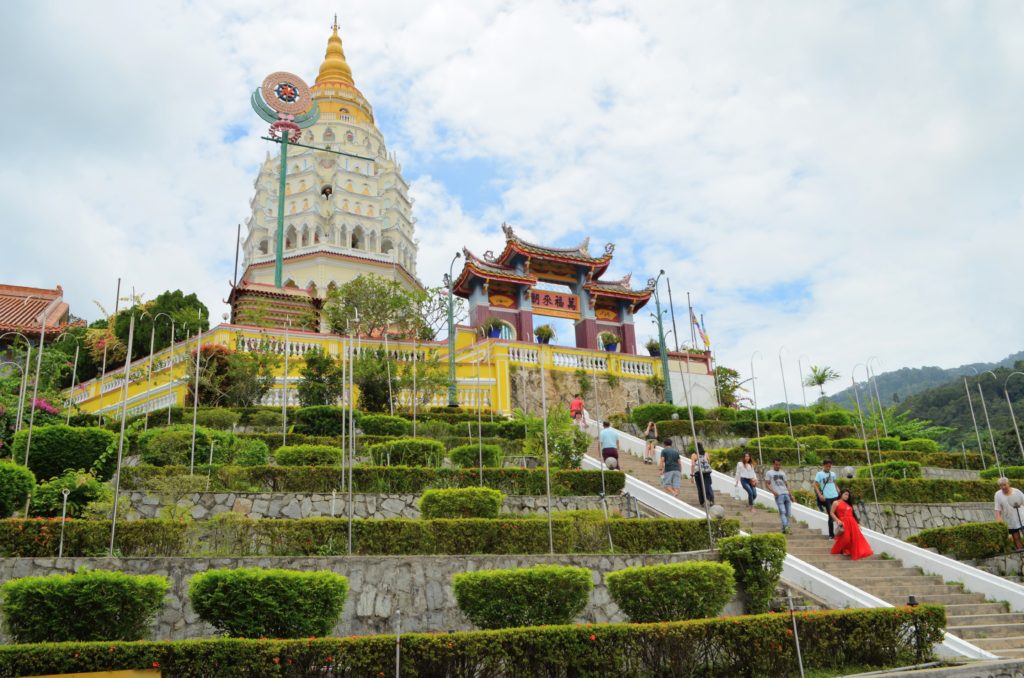
What to Eat
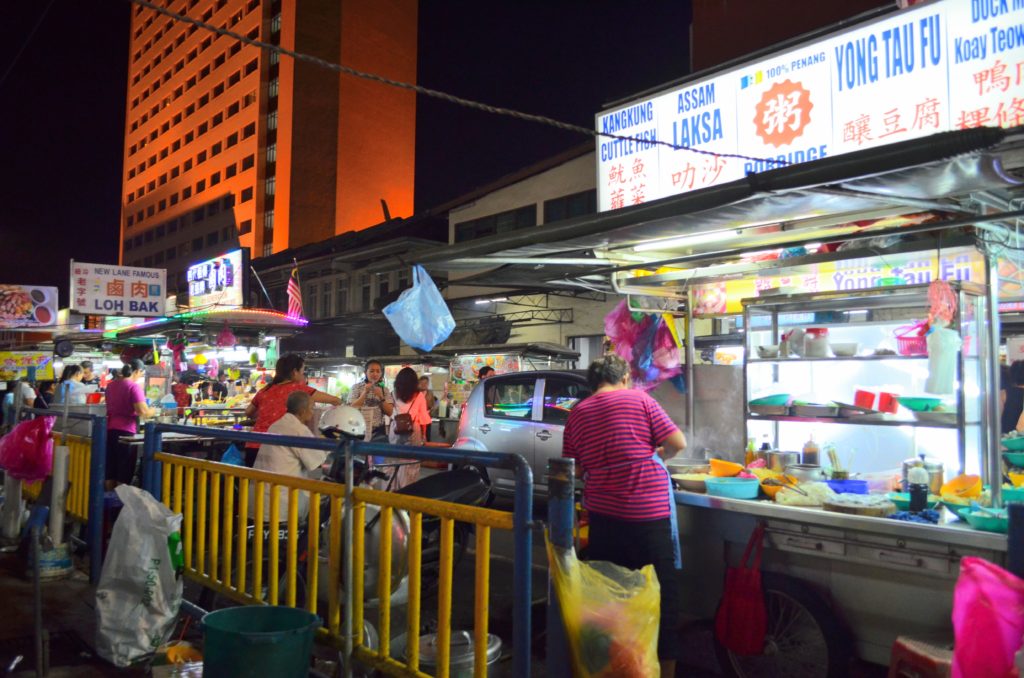
As mentioned, Penang is famous for its delicious food! There are lots of delicacies you absolutely must try and here are just a few dishes I loved. There are many (i’m sure) we have missed but one rule of thumb is pretty much everything is delicious, particularly the legendary street food. Also, my recommendation is to check out all the stalls when you first arrive to a night food market – see what the offerings are, take note of which stalls look particularly popular, and make your decision! Remember, the longer the line the better!
Assam Laksa
One of the classics to try is Assam Laksa, a tangy and flavorful noodle soup. Surely you have tried the creamy version of laksa in Singapore but this one has a different twist! Assam Laksa has a clear, fish-based broth, is reddish in color and spicy. Key ingredients include – tamarind, ginger, fish, shrimp paste, lemongrass and thick rice noodles.
The first bowl of Assam Laksa I tried in Penang was at China Cafe. This establishment is the perfect place for lunch after a long morning of sightseeing and is located near key tourist sites in Georgetown. Not only is it known for its large spread of pastries and cakes but also its hipster style. Upstairs you will find some interesting art installations and a quirky gift shop. Of course, I also managed to try Assam Laksa at one of Penang’s renowned street markets. Both were equally good and I have to say definitely worth having multiple times!
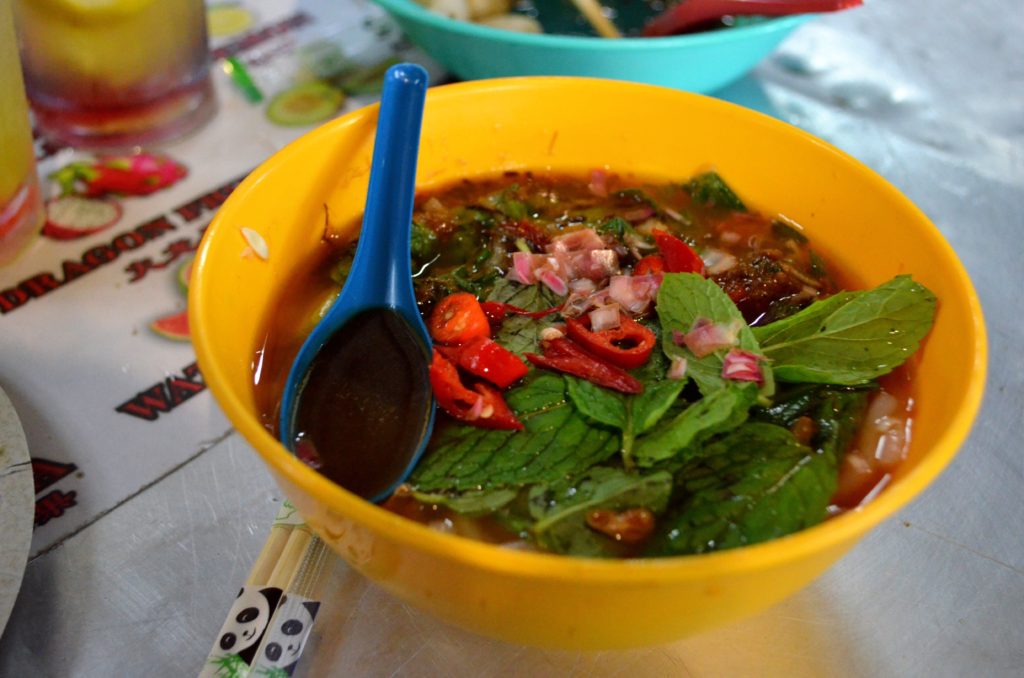
Char Kway Teow
This dish is one of my favorites. If you’re into chewy noodles, seafood, and slightly charred foods this is a must try! Char Kway Teow is made of flat rice noodles, prawns, Chinese sausage, bloody cockles, egg, bean sprouts and spring onion. The noodles are stir fried on high heat in a wok, which gives it its charred flavor. Mind you, the tiny street stall where I ordered from had the longest line but it was especially tasty. In Penang and Singapore, long lines at night markets and hawker stalls mean extremely delicious food and the wait is usually worth it. I had the option of ordering it with a duck or chicken egg and chose duck for the added flavor.
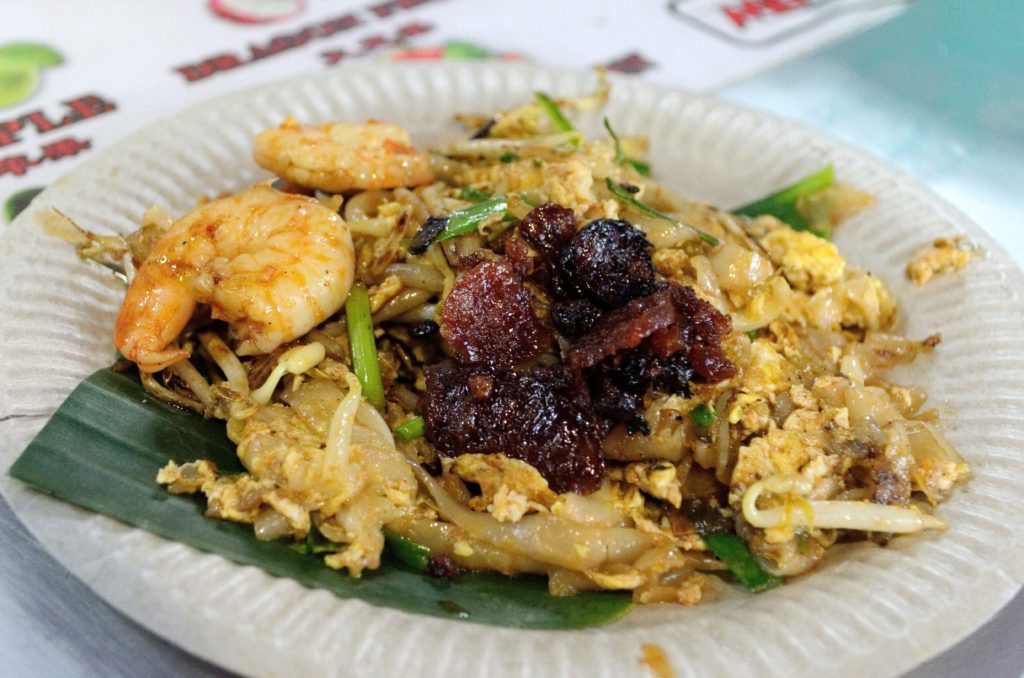
Oyster Omelette
A delicious dish that is perfect for oyster/seafood lovers out there! It is said that this Teochew dish originated in Fujian, Taiwan. However, due to the diaspora there are variations of Oyster Omelette that exist throughout Southeast Asia including Thailand. Nonetheless, the basic ingredients remain the same – small oysters, starch, egg, lard and a side of chili sauce. Though I am not a huge fan of shellfish, I had to give this a try because it looked so good! The oysters were juicy, tender, and the side of chili sauce gave it a nice kick considering it is a mild dish.
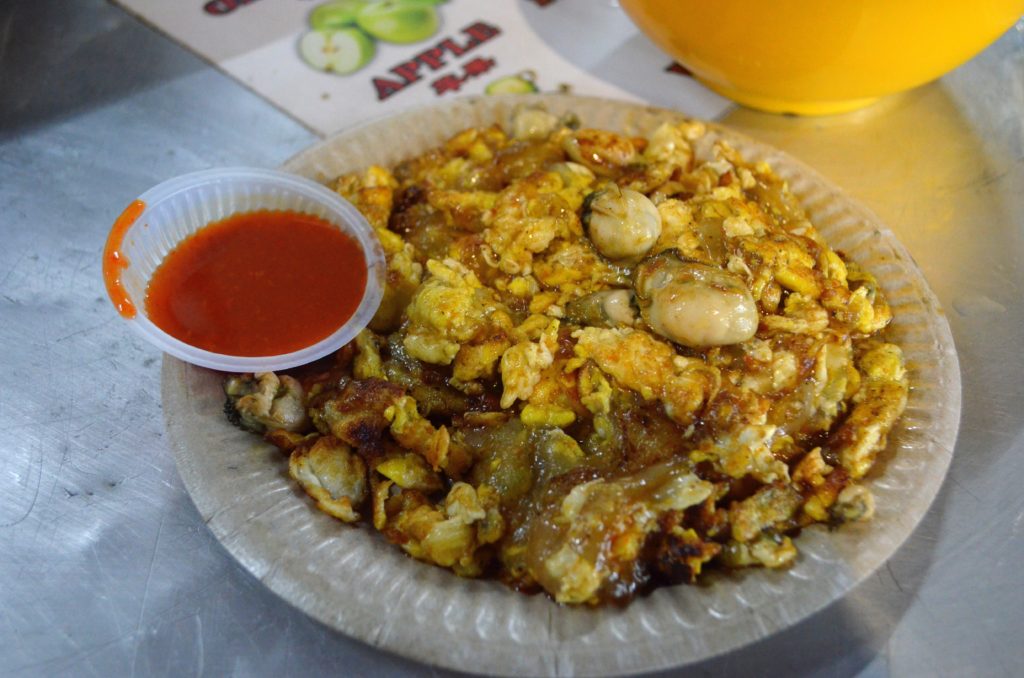
Dessert: Cendol & Apom
Cendol is hands down my favorite dessert in Southeast Asia! The first time I tried this delicacy was actually in Penang. Although Cendol might look a bit unusual to someone who has never tried it, it is absolutely delicious on a hot day! The main ingredients include – shaved ice, green noodles (made of rice flour), sweet red beans, coconut milk and palm sugar. The texture, flavor and playful look of this dessert are why I love it. In any of the night markets you are bound to find at least one cendol seller. Cendol tastes sweet and milky – similar to Korean patbingsu but with funky green noodles, a splash of coconut and an earthy sweet flavor from the palm sugar!
Another delicious dessert to try in Penang is apom, which is essentially flavored pancake with sweet filling. They come in all sorts of flavors and the one we tried was with pandan, hence the green color. Pandan leaves are frequently used in Southeast Asian desserts for sweetness and to provide a light green color. If you love pastries, definitely give apom a try!

